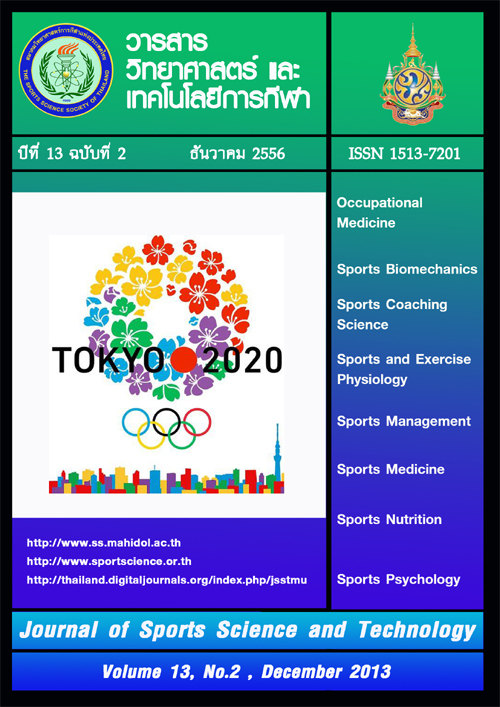STRATEGIC MANAGEMENT MODEL FOR HAPPY WORKPLACE OF SPORTS AUTHORITY OF THAILAND
Abstract
The objective of this research is to initiate strategic management model for happy work place management of Sports Authority of Thailand. The sample group used in this research consists of 12 high level management members of the Sports Authority of Thailand, 10 middle level management members related to policy making and 5 interested persons of the organization. The research methodology includes in-depth interviews to find basic elements of the factors and of the initiation of management model for happy work place of the Sports Authority of Thailand, which resulted that activities and projects had to be developed to correlate with the research results from interviews for opinions of experienced and expert persons, to prepare for action and strategic plans. It was found that the building of an organization with happy work place needs the development of various factors according to the factors’ weight, as related to the organization’s well being, and related to the main principles’ involvement (lx = 0.68).
Research Results
1) Organization Involvement in staying in the organization aspect (μ = 4.04 Ó = 0.88) with emphasis on promoting welfare development policy and employees’ well being according to real needs
2) Organization Involvement in norm aspect (μ = 3.99 Ó = 0.84) with emphasis on initiation of activities and projects to promote sense of belonging and loyalty to the organization in the long run, which is a morally correct action appropriate towards an organization.
3) Organization Involvement in mental aspect (μ = 4.01 Ó = 0.78) with emphasis on activities in employees’ mental development and rewards of appraisal, a monthly dedication of good service certificate, including color sports competition of internal offices and units to promote unity and in-a-family working atmosphere.
(Journal of Sports Science and Technology 2013;13(2): 67 – 77 )






